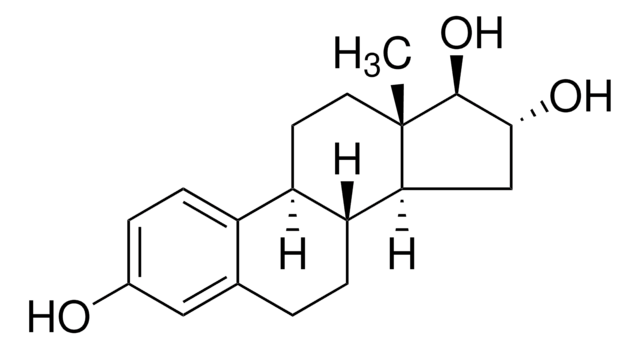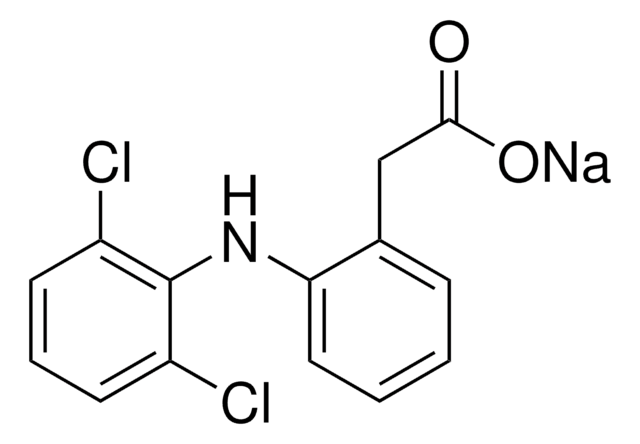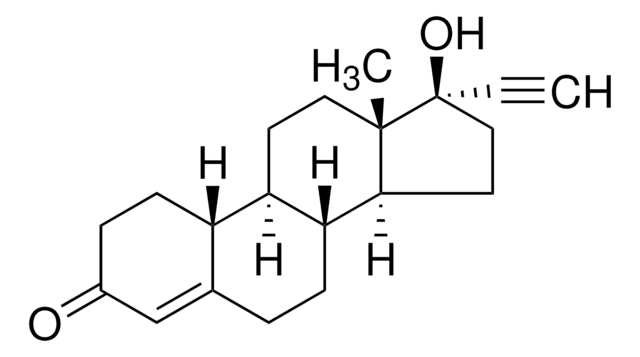E4876
17α-etinilestradiol
≥98%
Sinónimos:
17α-etinil-1,3,5(10)-estratrieno-3,17β-diol, 19-Nor-1,3,5(10),17α-pregnatrien-20-ino-3,17-diol, Etinilestradiol
About This Item
Productos recomendados
biological source
synthetic
sterility
non-sterile
assay
≥98%
form
powder
mp
182-183 °C (lit.)
solubility
ethanol: 50 mg/mL, clear, colorless to faintly yellow
shipped in
ambient
storage temp.
room temp
SMILES string
[H][C@]12CC[C@@]3(C)[C@@]([H])(CC[C@@]3(O)C#C)[C@]1([H])CCc4cc(O)ccc24
InChI
1S/C20H24O2/c1-3-20(22)11-9-18-17-6-4-13-12-14(21)5-7-15(13)16(17)8-10-19(18,20)2/h1,5,7,12,16-18,21-22H,4,6,8-11H2,2H3/t16-,17-,18+,19+,20+/m1/s1
InChI key
BFPYWIDHMRZLRN-SLHNCBLASA-N
Gene Information
human ... ESR1(2099)
rat ... Afp(24177) , Esr1(24890) , Shbg(24775)
¿Está buscando productos similares? Visita Guía de comparación de productos
General description
Application
Biochem/physiol Actions
signalword
Danger
hcodes
Hazard Classifications
Acute Tox. 4 Oral - Aquatic Chronic 1 - Carc. 2 - Repr. 1A
Storage Class
6.1C - Combustible acute toxic Cat.3 / toxic compounds or compounds which causing chronic effects
wgk_germany
WGK 3
ppe
Eyeshields, Gloves, type P3 (EN 143) respirator cartridges
Certificados de análisis (COA)
Busque Certificados de análisis (COA) introduciendo el número de lote del producto. Los números de lote se encuentran en la etiqueta del producto después de las palabras «Lot» o «Batch»
¿Ya tiene este producto?
Encuentre la documentación para los productos que ha comprado recientemente en la Biblioteca de documentos.
Los clientes también vieron
Nuestro equipo de científicos tiene experiencia en todas las áreas de investigación: Ciencias de la vida, Ciencia de los materiales, Síntesis química, Cromatografía, Analítica y muchas otras.
Póngase en contacto con el Servicio técnico














